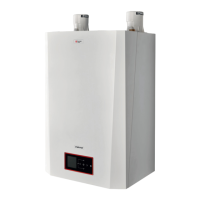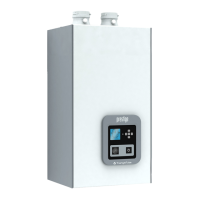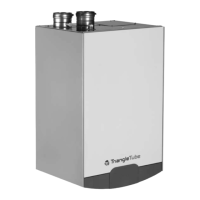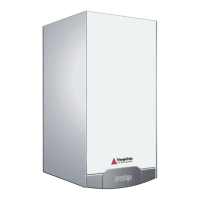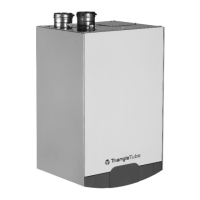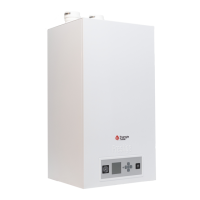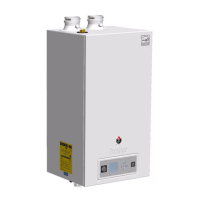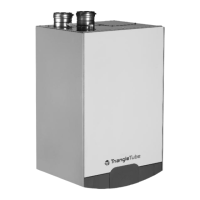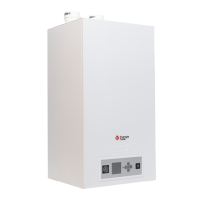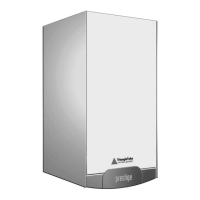Vent Termination
12" [30.5 cm]
(18” [45.7 cm] Canada)
Above the Highest
Anticipated Snow Level
24
CHAPTER 3
CHAPTER 3 - CATEGORY IV (INDOOR AIR) INSTALLATION OF VENT/AIR PIPING
3.1. Category IV - Vertical - Through the Roof
or Unused Chimney
• The installation must conform to the re-
quirements of the authority having jurisdic-
tion or, in the absence of such requirements,
to the National Fuel Gas Code, ANSI Z223.1/
NFPA 54, and/or Natural Gas and Propane
Installation Code, CAN/CSA B149.1.
• When using an inoperative chimney as a means
of a chase for the vent, the surrounding space
within the chimney cannot be used to draw
combustion air or vent another appliance.
A gas vent extending through a roof must not
terminate near an adjacent wall or below any
building extensions such as roof eaves, balco-
nies or decks. Failure to comply with the required
clearances in this manual can result in substantial
property damage, serious injury, or death.
The information and diagrams outlining the
fittings and method of terminating the vent/
combustion air are directly related to PVC/
CPVC vent systems. When utilizing an AL 29-
4C
®
or Polypropylene vent system, there may
be some variations. Consult the appropriate
vent manufacturer for recommendations and
clarifications.
NOTICE
WARNING
NOTICE
Fig. 15 - Category - IV - Vertical Termination of Vent Pipe
3.1.1 Determine Termination Location
Locate the vent and combustion air termination using
the following guidelines:
1. The total length of the vent piping must not exceed
the limits given in Table 6 on page 7.
2. The combustion air piping must terminate at the
boiler with a 90º elbow.
3. The vent piping must terminate vertically with a
coupling to accept the bird screen and must be
located 12” [30.5 cm] (18” [45.7 cm] Canada) above
the highest anticipated snow level as shown in Fig.
15 on page 24below.
4. The following should be considered when deter-
mining the location of the vent termination:
a. Locate the vent termination where ue vapors
will not damage surrounding shrubs, plants, air
conditioning equipment or be objectionable to
the homeowner.
b. The ue products will form a noticeable plume
of water vapor as they condense in colder air.
Avoid terminating the vent in areas where the
plume could obstruct window views.
c. Prevailing winds could cause freezing of ue
gas condensation and a buildup of water / ice
on surrounding plants or building surfaces.
d. Avoid locations where prevailing winds could
aect the performance of the boiler or cause
recirculation of the ue gases, such as inside
corners of buildings, near adjacent buildings,
vertical surfaces, window wells, stairwells, al-
coves, courtyards, or other recessed areas.
e. Do not terminate the vent above doors or win-
dows, ue condensate could freeze causing ice
formations.
f. Locate the vent termination to prevent possible
condensate damage to exterior nishes.
g. Avoid locations of possible accidental contact
of ue vapors with people or pets.
5. The vent termination must also maintain the follow-
ing clearances; as shown in Fig. 16 on page 25.
a. At least 3 feet [0.9 m] from adjacent walls
b. At least 3 feet [0.9 m] below roof overhangs
c. At least 7 feet [2.1 m] above any public walk-
ways
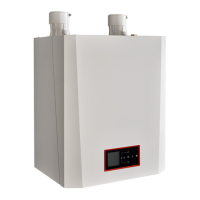
